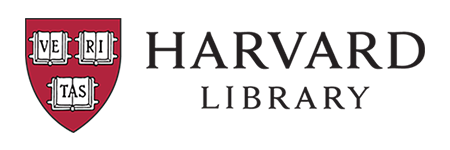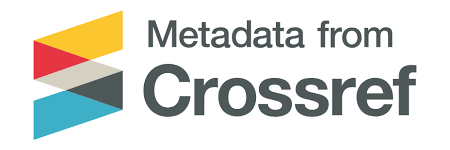Author Guidelines
Audience
Medical Sciences, Social Sciences, Management, Economics, and scientific research.
Types of articles
CORR welcomes the following type of articles namely, Normal length research articles or original research articles, case studies, and review articles.
Article publishing charges
There is no article publishing charges. It is an open access journal. Anyone can view, download, and read the articles free of cost. We charge only 100 USD Article Processing Charge after acceptance of the submission for some editorial, databases management, crossref doi database, continuous management of an open access journal online, and some extra publication expense management.
Open access statement
CORR is an open access journal which means that all content is freely available without charge to the user or his/her institution. Users are allowed to read, download, copy, distribute, print, search, or link to the full texts of the articles, or use them for any other lawful purpose, without asking prior permission from the publisher or the author.
Abstracting and Indexing
- Google Scholar
- Crossref doi
Manuscript structure
The manuscript should be prepared based on the given sample manuscript template. The manuscript should be formatted strictly according to the given instructions otherwise the manuscript will be sent back to the author or rejected.
The manuscript should be prepared in the following structure
Title, Author names, Affiliations, Country, Abstract, Keywords, Introduction, Methodology, Results and discussion, Conclusion, Acknowledgement/Funding Acknowledgement, Conflict of interest statement, References. The number of keywords should be between 3 to 6.
Please indicate star (*) in superscript of the corresponding author name. Please provide corresponding author email and contact details in all stages of publication process.
The manuscript should be typed in word document only. The manuscript must be prepared in single-column format. The maximum number of pages is limited to 30. The manuscript should be typed in times new roman.
The font size of the title should be in 14 and Bold. The author names and affiliation details size should be 10. The size of the abstract and keywords should be 12 with single spacing. The abstract should not exceed 250 words. The size of the headings, subheadings, and entire text inside the manuscript should be 12 font size and 1.5 line spacing. The equations should be provided in editable format (Use equation editing tool in MS Word). The quality of the figures should not be less than 300 dpi. The tables must be provided in editable format (don’t provide it as an image). Use SI units only.
Use the following structure for Heading and sub-headings
Example:
For first level heading: 1. INTRODUCTION (Bold), 2. METHODOLOGY
For second level heading: 1.1 Tensile Test (Bold), 2.2 Scanning Electron
For third level heading: 1.1.1 Tensile Test, 2.2.1 Scanning Electron (Italic)
Reference style:
References must be cited by numbers in square bracket in line with the text. Number the references (numbers in square brackets) in the list in the order in which they appear.
Example: '..... Contours are as validated [3,6]. Raju and Balaji [8] obtained a different result ....'Venkatesh et al. [5] examined cyclone……..
in the text.
Examples
Reference to a journal publication
[1] S. Venkatesh, S.Vijayan. The art of writing a scientific article, Journal of Advanced Mechanical Sciences. 163 (2010) 51–59.
Reference to a book publication:
[2] S.Venkatesh., M. Sakthivel, A Review in Cyclone Separator, First ed., Elsevier, New York, 2000.
Reference to a chapter publication:
[3] S.R. Devadasan, M.Sakthivel, Dust collectors for air pollution, in: S.J.Chelladurai (Eds.), Introduction to green manufacturing, CRC Press., New York, 2021, pp. 281–304.
Reference to a conference publication:
[4] S. Venkatesh, S.Vijayan. Investigation on the solar systems, International conference in mechanical sciences, India, 51–59.
Plagiarism
The plagiarism of the article to be detected by the Turnitin plagiarism detection service. The peer-review process is at the heart of scientific publishing. As part of Journal commitment to protecting the integrity of the scholarly record, Journal feels a strong obligation to support the scientific community in all aspects of research and publishing ethics. We invest in many resources to help educate researchers on how to avoid ethical issues, to detect any issues during the editorial process, to support editors in handling publishing ethics allegations and, if necessary, to correct the scholarly record.
Note: The plagiarism should be less than 10%. If it is exceeded above 10% the articles will be rejected in initial screening.
Peer review process
Critique Open Research & Review (CORR) is a double-blind peer review open access journal. Initially, the manuscript will be checked for the journal format and other necessary details as per author guidelines. The manuscript passes this initial step will be moved to the editor-in-chief for language and technical screening as per journal scope. Once the manuscript satisfies the aim and scope of the journal will be sent to the reviewer for peer-review process. If it is not satisfied with the journal scope and aim of the journal then it is directly rejected by the editor without any further considerations. In the peer review process, the manuscript will be sent to two reviewers (Experts in particular subject areas) for evaluating the quality of the manuscript. Based on the reviewer’s comments, the editor will be given the following decision such as Accepted, Major revision, Minor revision, Rejected. If the manuscript is rejected by the reviewer then it is directly rejected without any further considerations. If the revise decision is given, the author should be asked to revise the manuscript according to reviewer comments. After receiving the revised version, the manuscript should be allotted to reviewers for final evaluation. Based on the reviewer’s second level of comments, the manuscript should be accepted or rejected by the editor. If the second revision is required then the manuscript should be sent back to the authors. If the manuscript is accepted then it will be moved to the production process after getting APC from author.
Copyright and Licensing
Authors retain the copyright of their manuscripts, and all Open Access articles are disseminated under the terms of the Creative Commons Attribution License 4.0 (CC-BY), which licenses unrestricted use, distribution, and reproduction in any medium, provided that the original work is appropriately cited. The use of general descriptive names, trade names, trademarks, and so forth in this publication, even if not specifically identified, does not imply that these names are not protected by the relevant laws and regulations.
Ethics in publishing
The publication of a manuscript in a peer-reviewed journal is a vital construction block in the growth of an intelligible and appreciated network of data. It is a straight replication of the excellence of the effort of the writers and the organizations that care them. Peer-reviewed articles care and exemplify the technical process. It is therefore significant to approve upon morals of anticipated ethical behaviour for all festivities complicated in the act of publishing: the author, the journal editor, the peer reviewer, the publisher and the society of society-owned or sponsored journals.
Ethical Responsibilities of Authors
This journal is dedicated to perpetuation the honesty of the scientific record. The journal will follow the COPE guidelines on how to deal with possible acts of misconduct.
Authors should catchphrase from perverting research results which could harm the faith in the journal and eventually the whole scientific endeavour. Preserving honesty of the study and its exhibition can be attained by following the rubrics of good scientific repetition, which comprises
- The document has not been submitted to more than one journal for instantaneous deliberation.
- The manuscript has not been published previously (partly or in full), if the new work anxieties a development of preceding work (please deliver transparency on the re-use of material to evade the clue of text-recycling (“self-plagiarism”)).
- A single investigation is not divided up into numerous parts to upsurge the quantity of submissions and acquiesced to various journals or to one journal over time.
- No data have been made-up or deployed (including images) to support your deductions
- No data, text, or theories by others are obtainable as if they were the authors own (“plagiarism”). Correct salutations to other works should be given (this comprises material that is carefully copied (near verbatim), abridged and/or rephrased), quotation marks are used for precise copying of material, and authorizations are tenable for material that is copyrighted.
Important note: the journal may use software to screen for plagiarism.
- Agreement to submit has been acknowledged from all co-authors and answerable authorities at the institute/organization where the study has carried out earlier the study is submitted.
- Authors whose names look on the proposal have donated adequately to the scientific work and therefore share cooperative accountability for the results.
In addition:
- Changes of authorship or in the order of authors are not recognized after acceptance of an article.
- Requirements to add or delete authors at revision stage or after publication is a thoughtful matter, and may be painstaking only after receiving of written endorsement from all writers and thorough clarification about the role/deletion of the new/deleted author. The judgement on compliant the change rests with the Editor-in-Chief of the journal.
- Upon appeal authors should be equipped to send appropriate certification or data in order to confirm the rationality of the results. This could be in the method of raw data, records, samples etc
If there is a misgiving of misbehaviour, the journal will carry out an examination following the COPE guidelines. If, after examination, the claim appears to raise lawful concerns, the suspect author will be communicated and given an chance to discourse the issue. If misbehaviour has been confirmed, this may result in the Editor-in-Chief’s implementation of the following actions, including, but not limited to:
- If the article is still under contemplation, it may be rejected and reverted to the author.
- If the article has already been available online, contingent on the nature and harshness of the breach, either an erratum will be located with the article or in severe cases complete withdrawal of the manuscript will occur. The aim must be given in the published erratum or withdrawal note.
- The author’s institution may be informed.
After Acceptance
Proofing Procedure:
After acceptance of the manuscript, the corresponding author will receive an acceptance email from the chief editor of the journal along with a request to submit a signed declaration and copyright transfer form and APC article processing fee. Once the signed copyright form and payment receipt are received by the editorial office, the production process will be initiated and the corresponding author will receive a proof by PDF. Proofreading is solely your responsibility
The proof is to be checked carefully for the following
- Author(s) name, sequence, affiliation details, and corresponding author's contact information (email address, contact number, and fax).
- Correctness of the text, citation of all figures and tables.
- Confirm that all the references cited are listed under references.
- Funding and conflict of interests, if any should be included at the end.
Prompt returning of the proofs will ensure timely publishing of your manuscript.
Publication and Repository policy
The updated final version of your manuscript will be published online along with the journal issue. Authors are encouraged to deposit all the versions of article (submitted version, accepted version and published version) in their institutional repository or any suitable subject repository as per the author’s choice without embargo. Moreover, the authors are advised to use the published article URL to deposit the article in the suitable repository.
Sections
Copyright Notice
Authors retain the copyright of their manuscripts, and all Open Access articles are disseminated under the terms of the Creative Commons Attribution License 4.0 (CC-BY), which licenses unrestricted use, distribution, and reproduction in any medium, provided that the original work is appropriately cited. The use of general descriptive names, trade names, trademarks, and so forth in this publication, even if not specifically identified, does not imply that these names are not protected by the relevant laws and regulations.
Privacy Statement
The names and email addresses entered in this journal site will be used exclusively for the stated purposes of this journal and will not be made available for any other purpose or to any other party.







